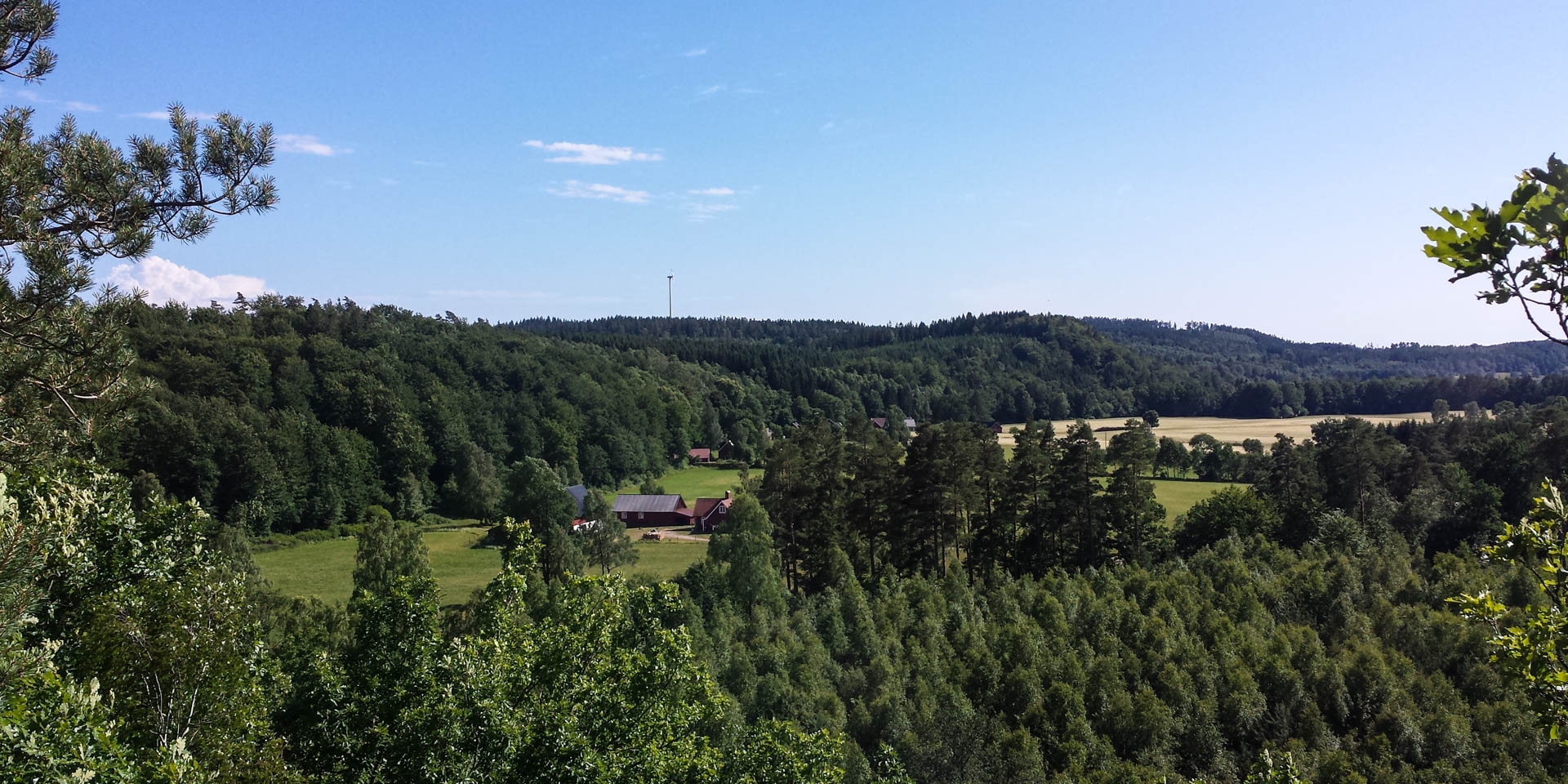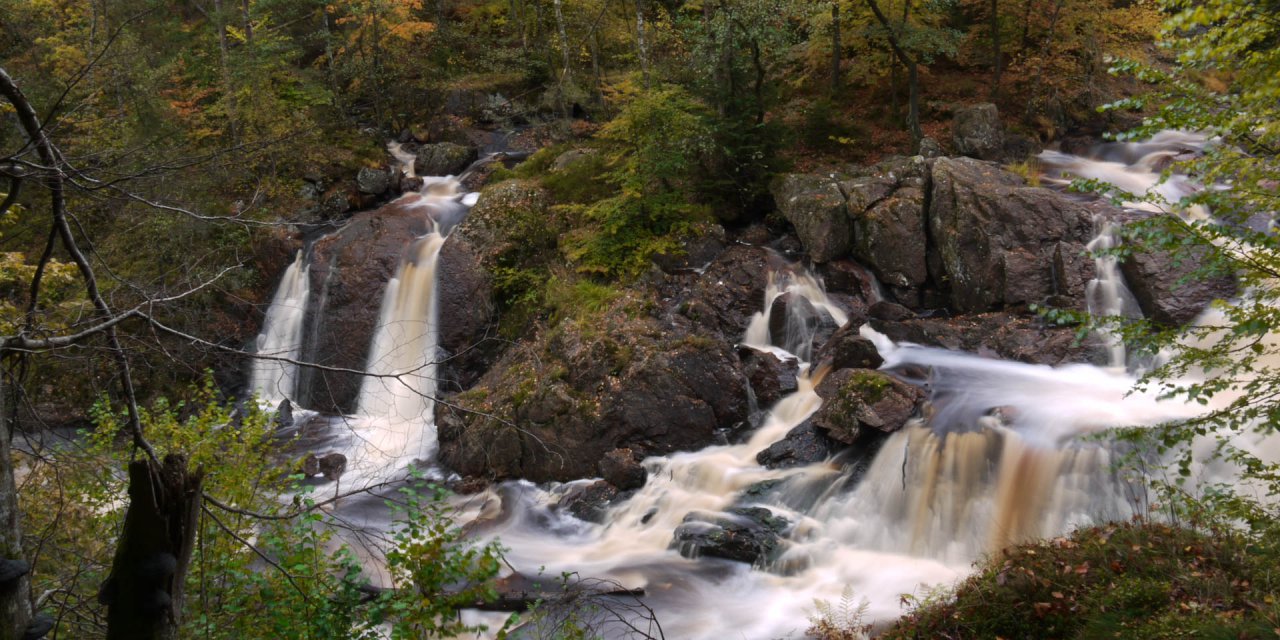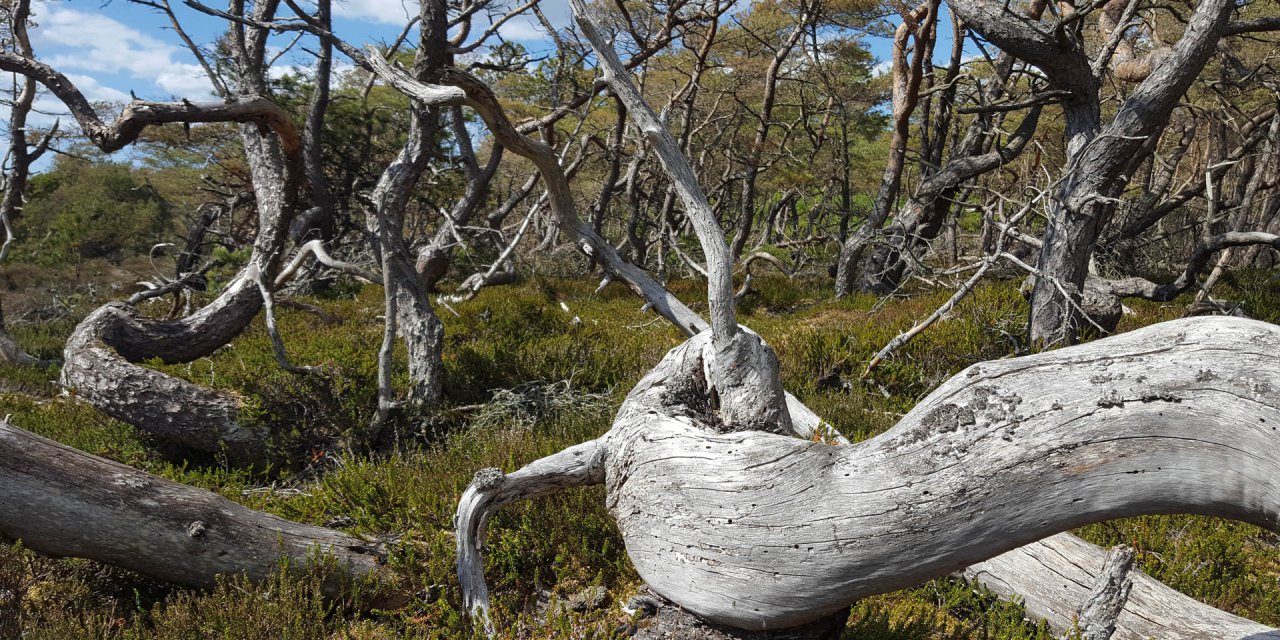

Virsehatt Naturreservat
Nature reserve near Oskarström
The nature reserve Virsehatt Naturreservat is located on the 70 meter high mountain Virsehatt near Oskarström, about 20 kilometers northeast of Halmstad.
When the Virsehatt Naturreservat was opened in 1937, it was the first nature reserve in the province Hallands Län in the southwest of Sweden. With an area of 16 hectares, it covers the prominent mountain Virsehatt, which rises like a large dome from the plain on the banks of the river Sennan.
The rocky and steep mountain is forested all the way up to the summit. It consists mainly of a mixed deciduous forest, with oak trees growing on the slopes and in the gorges, while the forest in the upper part of the mountain is more dominated by beeches.
Flora and fauna of the nature reserve
The parts of the nature reserve situated at the base of the mountain consist on the south and west side of pastures and meadows with single oaks as well as hazelnut and juniper bushes. The most lush green is on the north side near the river bank. Alder trees and raspberry bushes grow there, and in springtime liverleafs (Anemone hepatica) and yellow star-of-Bethlehem (Gagea lutea) stretch their flowers through the brown leaves of the previous year.
As an essential part of the nature reserve, the river has an intact ground fauna and is the habitat for sensitive birds and fish. Trout and even salmon spawn there and common kingfishers (Alcedo atthis), grey wagtails (Motacilla cinerea) and white-throated dippers (Cinclus cinclus) hunt for water insects.
The most dramatic part of the reserve is located on the summit of the Virsehatt. There, the cliffs drop down vertically in some places over many metres and offer an unobstructed and wide view from above over the surrounding landscape, the course of the river as well as over to the sea when visibility is good.
Prehistoric importance of the mountain Virsehatt
According to legend, some of the steep cliffs were used in pre-Christian times as a so-called Ättestupa – an abyss into which the elderly and the sick threw themselves to death or were thrown if they became a burden for the community. There is no evidence for this, but since the term often appears in connection with high cliffs in the early history of Scandinavia, you cannot be sure.
In any case, one of the cliffs was a Bronze Age sacrificial site, since some rocks have the typical small bowl-shaped depressions, the so-called Skålgropar, which were carved into the stone in the Bronze Age to accommodate sacrificial offerings. Furthermore, some remains of a prehistoric refuge can be found on the top of the mountain, which is rather atypical for this region of Halland.
Explore the Virsehatt Naturreservat with fun
In order to make the stay in the nature reserve more interesting for children, there is a digital treasure hunt on the mountain. At different stations you can scan QR codes and a character called Virse introduces you to a story. It tells the tale of several brothers who hid three treasures in the mountain 1,500 years ago. The treasure hunt leads the whole way up to the summit. With the help of the maps on the smartphone or tablet you can find the hidden treasures and at each station on the way you get to hear another part of the story.
From the parking lot at the base of the mountain two marked trails lead through the nature reserve. One of the paths leads around the mountain and on the west and south sides through the pastures at the foot of the mountain. The second path leads steeply up to the top of the mountain, partly with the help of stairs. Then back along the slope around the mountain, with the possibility making a stop at the riverbank.



